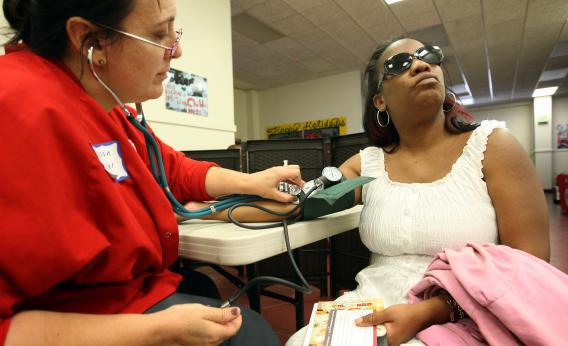One of the scare tactics of opponents of the Affordable Care Act was to float the idea that it would increase the abortion rate, by giving women who were previously forced to give birth out of a lack of abortion funding a chance at insurance coverage. This fear nearly tanked the law, and only by signing an executive order that strongly limits the right of insurance companies to cover abortion was Obama able to save his signature legislation. Now new statistics have come out from the state of Massachusetts, whose health care law signed by Mitt Romney is almost exactly like the ACA—except without the abortion restrictions. Guess what? Instead of the predicted spike in abortions, it turns out that expanding women’s access to comprehensive health care quite likely lowered the abortion rate in Massachusetts.
The abortion rate went down from 3.8 abortions per 1,000 state residents in 2006 to 3.14 in 2011. But there were dramatic shifts in the most vulnerable part of the population. Teenagers saw their rate go down 21 percent in this period. The overall abortion rate in Massachusetts has been going down generally since before Romneycare, but seeing this kind of dramatic dip with teenagers makes it likely that the health care act played a part. As reported by Brian Fung at The Atlantic:
That said, scientists think the latest drop in abortion rates is at least partly tied to a couple recent factors. According to Danielle Bessett, a sociologist at the University of Cincinnati who has studied small samples of low-income Massachusetts residents, patients who became eligible for state-subsidized insurance under Romneycare were “delighted” at the prospect of improved access to contraception. People no longer have to rely on condoms alone. Now they can get birth control pills or shots if they prefer.
Across the country, abortion rates have been going down, but at the same time the concentration of abortions among poorer women is actually getting worse. If the abortion rate for poor women could be brought down to the same level as college-educated middle class women, we’d be seeing abortion rates closer to the ones in much of Western Europe, as opposed to our relatively high ones here. The gap, as Fung reports, is about more than just getting the contraception itself. When women have consistent access to health insurance, they see a doctor more often, and therefore have a chance to have conversations about preventing unwanted pregnancy. These conversations can go a long way towards not just encouraging more contraception use, but more effective contraception use. Many women don’t know the basics, such as the need to take the pill at the same time every day. Or that if you miss a pill you need to just take it as soon as you remember, even if you end up taking two pills at once. Regular access to a doctor can make sure that fewer women fall through the cracks. Cumulative research collected by the Guttmacher Institute demonstrates not just that contraception use reduces abortion rates, but also that there’s a lower abortion rate amongst women who switch from over-the-counter methods like condoms to doctor-controlled kinds, like IUDs or the pill.
As the ACA not only requires copay-free contraception, but copay-free contraception consultation, there’s a strong possibility of seeing similar results in a few years on a national scale. Not that I imagine it will discourage anti-choice activists from continuing to denounce the contraception mandate. If they were in this because they actually cared about abortion, sure, but they’re not going to be interested in solutions that reduce the number of abortions if they also mean that women keep on having the same amount of sex.
